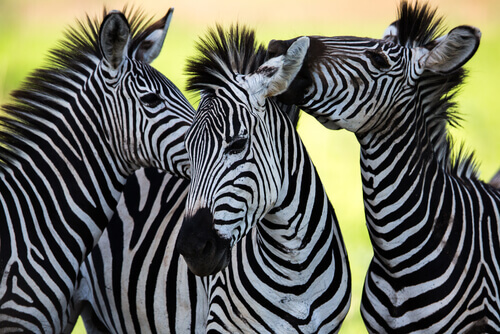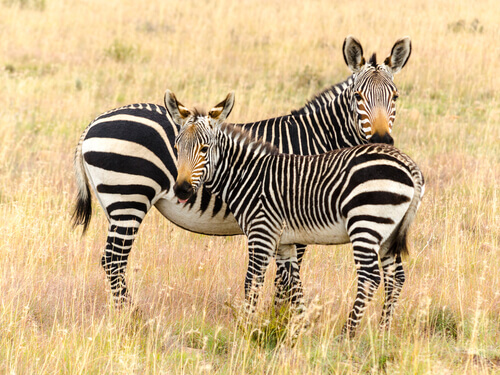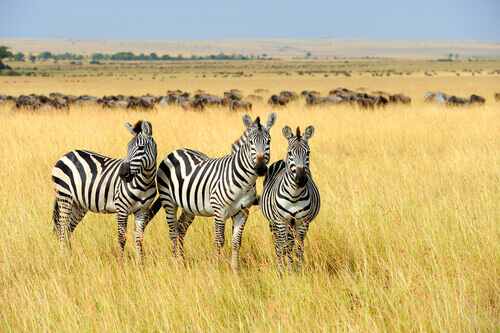The Amazing Color and Patterns of Zebra Fur

Zebra fur is one of the most recognizable among African animals. Their black and white striped pattern is quite unique. But are they white with black stripes, or black with white stripes? Continue reading and find out the answers to these and other questions!
Characteristics of a zebra and its fur
In the first place, it’s an equine, closely related to horses and donkeys. When you talk about zebras, you’re actually referring to three different species of animals, which all have this striped coat: the plains zebra, the mountain zebra, and Grévy’s zebra.
They’re actually three different species, and each of them has its own characteristics – such as the striped pattern on their bodies. Beyond their resemblance to horses or other equines, they all exhibit different behavior.
All three species are smaller than horses. The Grévy’s zebra is up to 5 feet tall at the withers and weighs almost 900 pounds. Like other equines, their legs are long and their ears large. These move in all directions and contribute to the animal’s rather acute hearing.
They’re herbivorous animals that feed on grass and leaves. They mainly eat in the morning and evening, and either rest or remain alert during the middle part of the day.
Different species of zebra require specific amounts of water, especially during the dry season. The mountain zebra climbs to altitudes where it’s cooler and rains more frequently, while the plains zebra and Grévy’s zebra must migrate across the African continent in search of rivers or water sources.

Zebra habitat
This animal lives in the savannah, a complex ecosystem with large expanses of tallgrass prairie, many shrubs, and few trees. The mountain zebra is used to living on steep terrain, while the other two live in the plains.
All zebras live on the African continent though. Almost all of them inhabit southern and eastern Africa, although there are small groups in the plains of Kenya, which is almost in the heart of the continent.
It’s a well-known fact that their territory was much larger centuries ago. Unfortunately, they’ve had to retreat to their usual positions. All zebra species are endangered, mainly due to two problems:
- The quagga, one of the zebra species, became extinct in the early 19th century due to poaching
- Large numbers of livestock that destroy their habitat or force them to compete for food
Zebra behavior
These animals group small herds, consisting of several mares and some stallions. There are many stallions without a herd so people consider them nomadic. They may join a herd during their lifetime, though.

In times of food shortage or abundance of predators, several herds may join together to form large groups of hundreds of animals. They’ll then divide into the original small herds. This is a great way to confuse lions, as they can’t decide on a single zebra to attack.
They’re social animals, always alert to protect themselves from threats. In fact, they sleep standing up and take turns to guard at night. They sometimes lie down during the middle of the day, and do so in pairs, facing opposite directions.
Zebra fur is black with white stripes or is it white with black stripes?
After much discussion, biologists have come to the following conclusion about zebra colors. They’re black with white stripes. Here are some of the scientific observations:
- The fetuses are black and develop white stripes shortly before birth
- The quagga had stripes only on their neck and front legs, while their entire rear is dark
- Someone discovered a black zebra that had white spots instead of stripes
- The white stripes grow with the body, so the older the animal, the larger their stripes
- A secondary stripe appears in shades of brown when there’s a lot of black space without white stripes
Zebras are close relatives of donkeys and horses, although they’ve never been domesticated. They’ve become endangered due to people hunting and poaching them for their unique stripes. However, there are large groups living in protected parks and the biologists who care for them are optimistic.